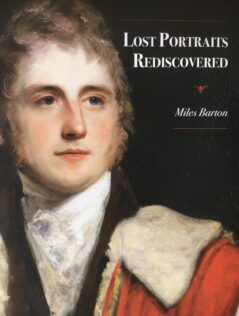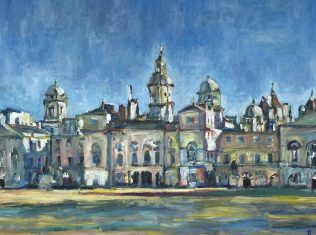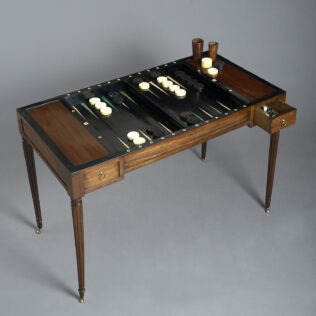As a furniture dealer, the story of wood fascinates me. In cabinet making terms it begins in the medieval period when oak, an indigenous timber throughout northern Europe, was the favoured material for making furniture. This was the case 17th century when walnut suddenly became fashionable. This is the case throughout Europe until the end of the 18th century and in England until the middle of the 18th century when mahogany finally took over.
Walnut
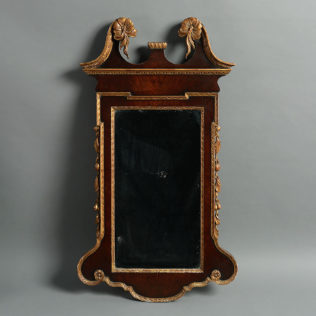
But this mirror, which was made in England in 1730, certainly belongs to what is known now as the Golden Age of English cabinet making: the walnut period. And as you look at it, this nutty brown veneers running all the way around book matched in the middle – which basically means a single piece of timber divided in two and then laid flat over surfaces so that both sides reflect one another.
As you can see this is articulated with gilded carved decoration which runs all the way around highlighting the form. Just as that mirror is veneered in walnut, this piece uses solid walnut timber for its construction and decoration as you can see it has the same nutty colour, but this piece was made in France at the end of the 18th century, the Directoire Period. The French continued using walnut throughout the 18th century until the Empire period when mahogany became fashionable.
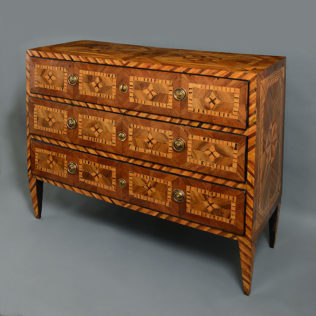
Rather like the French, the Italians also utilize walnut in all their furniture designs. The piece is veneered throughout in walnut with fruit wood detailing enabling geometric design throughout. It was made in Piedmont, which is in northern Italy and this sort of work is typical of that region.
Thomas Chippendale was the greatest cabinetmaker and furniture designer of the 18th century and his Gentlemen’s Director of 1754 outlines numerous designs which cabinet makers could copy.
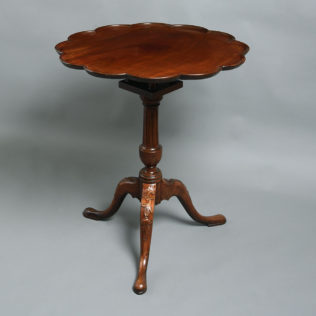
This table was made in about 1760 closely resembles the designs of Thomas Chippendale. It has a scallop top, a fluted column stem, cabriole legs and also fabulous carved decoration throughout, which includes sea scrolls, shells and foliage.
Satinwood
Another great furniture designer from the 18th century was Thomas Sheraton his designs from the 1780s and 90s, to a large extent, incorporate the timber satinwood. Satinwood is a close relation of mahogany. It is a similar grain but is much blonder in colour. So we’ve looked at walnut, mahogany and satinwood and these three timbers form the basis of furniture making and Britain and throughout Europe in the 18th century.
To demonstrate the breadth of different woods that are represented in our collection, below for the first time, here are some items from our site listed by their wood:
Mahogany
A George II Period Mahogany Chest of Drawers
A Biedermeier Occasional Table
A Regency Mahogany Console Table
A Directoire Period Walnut Commode
Another Directoire Period Walnut Commode
A George II Period Tabernacle Mirror
Rosewood
Burr Ash
An Early 18th Century Burr Ash & Elm Side Table
Another Early 18th Century Burr Ash & Elm Side Table

